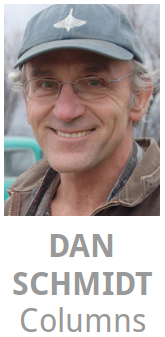
Something has gone seriously awry in the world. It has given this writer cause for pause but two devils have to be given their due painful though it is. President Donald Trump has done something I’ve been hoping some president would do for years. Almost as stunning, First District Congressman Raul Labrador has also done something I could not agree with more.
While it is hard to understand why President Trump is going out of his way to pick a fight with those that make and use ink by the barrelfull, one can see the guiding hand of Steve Bannon, his senior strategic advisor, in deciding to make war on the media and Hollywood since both are perceived to be the self-annointed elite of the nation, and entitled to be the ruling class.
They lend themselves too easily as a target for one who wants to divide, not unite. Since the Democrats are providing nothing but road kill beside the highway, Bannon has decided destroying the credibility of the media and punching out the pretenders in Hollywood are much more inviting targets of opportunity.
It is a not so subtle form of fomenting class divisions; it pits the haves against the have nots. It just might work if enough people are content to abdicate their responsibility to be informed citizens and would rather just follow “der leader.”
All that said, the President is absolutely corrrect not to lend his office and its prestige to the self-glorification spectacle the White House Correspondents dinner has turned into. It used to be a modet affair with actual writers who covered the president. It was more of an informal get together, off the record, with a little frivolity and good conversation.
It has turned into a three-day bash dominated by the media and publishing world’s management and owners who want to brag about dinner with the president and what cabinet officer or movie starlet they’ve been able to woo to sit at their table. It is a glorified form of show, tell and brag and all administrations are expected to play along as good sports while bowing to the fourth estate’s influence.
It is disgusting. Competition for limited tickets to pre-event and post events is almost as demeaning as the competition for tickets to the dinner itself. The president gets an “atta boy” on this one and his decision not to be a hypocrite and play along is the first encouraging sign that they just might restore the proper adversarial relationship that should exist rather than the fawning and patronizing orgy of self-congratulation and self-praise it has become.
Then this past week Idaho’s First District congressman, Rep. Raul Labrador, expressed his support for term limits. His is a well reasoned approach and should be given careful consideration. Most Constitutional scholars believe the Founding Fathers never envisioned a permanent or semi-permanent ruling elite with lifetime tenure for those who held seats in the House and the Senate. However, with incumbents retaining their seats over 90% of the time, a ruling elite has emerged.
One need look no further than Alaska’s lone Congressman, Don Young. He was elected to the seat vacated by the disappearance and presumed crash of the aircraft flying incumbent Nick Begich from Juneau to a fund-raiser in Anchorage in 1972. Young won the special election in March of 1973 and has been there ever since---that’s 44 years.
Labrador believes 12 years should be the max and he is correct. Something happens at the ten-year mark even to the best members of Congress or the best governors. Many cannot conceal a sense of entitlement, nor can they hide a sense that they’ve seen and know all the problems one confronts.
The voter gets the sense that they think trhey’ve been there and done that, and there’s nothing new to surprise them. Thus, they grow impatient, imperious and they quit listening. Two consecutive terms for a U.S. Senator and three consecutive terms for a governor is more than enough time to solve problems.
Then it is time to head back to the farm or the business and let others take on the challenges.
There is one other wrinkle, though, that Congressman Labrador should include as an amendment to his proposal---the 12 year limit ought to apply to the civil service. If one wants real and truly significant change this is how one breaks the stranglehold the bureaucrats have over the elected and the appointed.
The goal should be to encourage turn-over. Each year we graduate from our colleges and universities thousands of young men and women who are fishery biologists, engineers. lawyers, field geologists, etc., most of whom cannot find a job.
Force turnover in all government levels by setting an upper limit of 12 years and there will be plenty of qualified applicants. One can still have 36 years in their field---12 years at a county or city level, 12 years at the state and 12 years at the federal level.
Everyone would win. So an atta boy to the Congressman and to the President. You’re on the right track.





